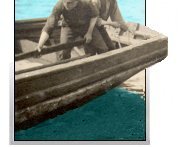Lumsden (pop. 1986, 636) is a fishing community on the Straight Shore, known as Cat Harbour until 1917, when it was renamed in honour of Rev. James Lumsden. The name Cat Harbour was often applied to settlements on both sides of the sandy cove now known as Lumsden Harbour, at Cat Harbour Point or Seal Cove (Lumsden North) and at Lumsden South, the present-day site of the community.
By the first Census in 1836 there were 97 people recorded at Lumsden and Cape Freels. Over the next two decades the Straight Shore migratory fishery began to decline and permanent settlement increased.
Although some Lumsden residents were involved in the Labrador fishery, the area was noted for having some of the best inshore grounds on the northeast coast. Local fishermen strongly supported the Fishermen's Protective Union movement, forming a local council in 1909 and building a Union store in 1912, which operated until 1932. Lumsden also had a strong tradition of involvement in the spring seal fishery and of winter woods works (although local woods work all but ceased after the great Bonavista North forest fire of 1961).
The first highroad to Lumsden was built in 1952 and Wesleyville began to develop as a commercial centre for the Straight Shore after the road was upgraded in 1960. In 1962 a regional high school was built at Lumsden South and in 1966 residents of Lumsden North began moving their homes under a government resettlement program. By the following winter the two communities had effectively merged and the town of Lumsden was incorporated in 1968.
From the Encyclopedia of Newfoundland and Labrador


